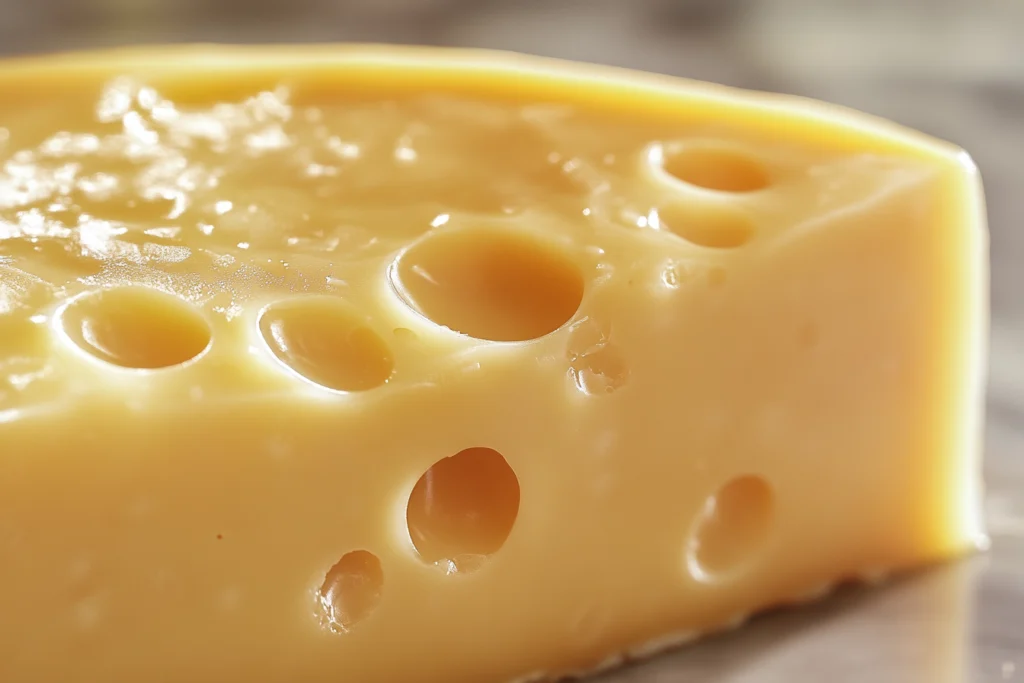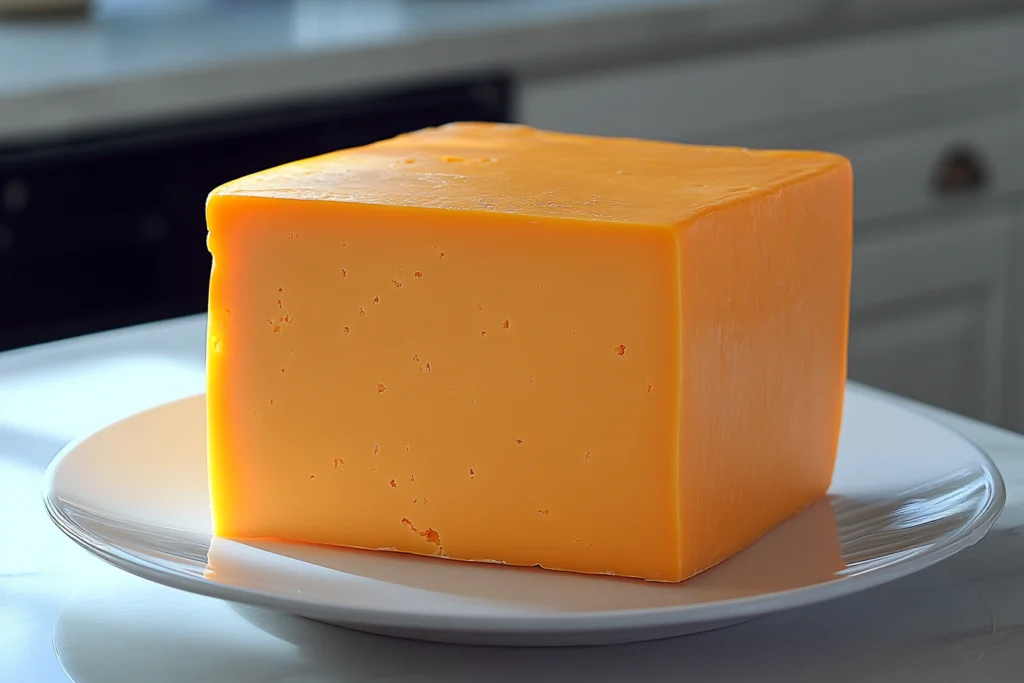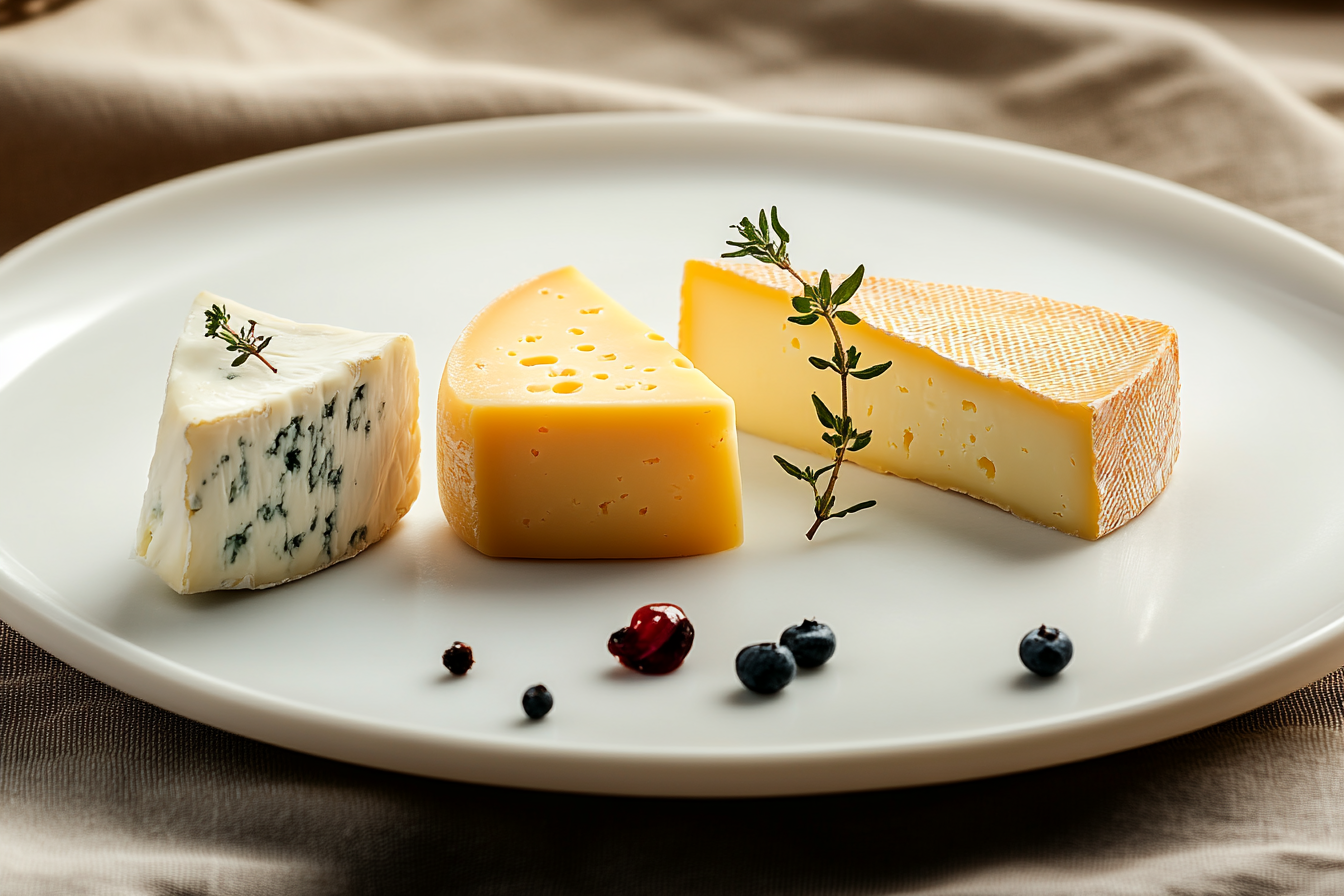Why Choosing the Right Cheese Matters in Mac and Cheese
Mac and cheese is a comfort food staple, but its quality heavily depends on the cheese used. Selecting the right cheese insures a creamy texture, rich flavor, and satisfying dining experience. Poor cheese choices can result in a grainy sauce, overpowering taste, or a dish that doesn’t hold together well.
- The right cheese increases flavor balance.
- It determines the dish’s texture and creaminess.
- Choosing properly insures even melting.
When wondering “What three cheeses are best for mac and cheese?”, knowing how different cheeses interact can make all the difference.
The Science Behind Melting Cheeses
Understanding the science behind melting cheese helps in crafting the perfect mac and cheese. Cheese with high moisture and fat content tends to melt smoothly, while drier cheeses may clump or resist melting altogether.
- High-fat cheeses like cheddar melt into a creamy consistency.
- Low-moisture cheeses such as Parmesan often add texture but may not fully melt.
- Proteins and oils separate if the cheese overheats, causing a gritty sauce.
To assure success:
- Use young cheeses, as aged ones can be too stiff.
- Combine cheeses with complementary melting properties.
This knowledge is essential when deciding what three cheeses are best for mac and cheese.
Top Criteria for Selecting Cheeses for Mac and Cheese
Choosing the right cheeses involves balancing flavor, texture, and melting capabilities. Here’s what to prioritize:
- Flavor:
- Use bold cheeses like cheddar for depth.
- Mild cheeses, such as mozzarella, balance stronger flavors.
- Melting Ability:
- Opt for smooth-melting cheeses like Gouda.
- Avoid overly aged or dry cheeses.
- Texture:
- Blend creamy cheeses with firmer varieties for structure.
When selecting, always test combinations to achieve a sauce that is rich, creamy, and flavorful. Keeping in mind the query “What three cheeses are best for mac and cheese?” can help narrow your options.
The Three Best Cheeses for Mac and Cheese
After extensive testing, these are the top three cheeses for mac and cheese:


- Sharp Cheddar:
- Flavor: Bold and tangy.
- Melting: Smooth and consistent.
- Role: Acts as the primary cheese for depth.
- Gruyère:
- Flavor: Nutty and slightly sweet.
- Melting: Silky and perfect for blending.
- Role: Adds complexity.
- Monterey Jack:
- Flavor: Mild and buttery.
- Melting: Extremely creamy.
- Role: Increases creaminess without overpowering.
These cheeses provide the ideal balance of flavor and texture, making them the answer to “What three cheeses are best for mac and cheese?”
Honorable Mentions: Other Cheeses to Consider
While the top three cheeses form a strong foundation, there are other options worth exploring:
- Parmesan:
- Adds a sharp, salty finish.
- Best used in small amounts to avoid overpowering the dish.
- Brie:
- Delivers a creamy, luxurious texture.
- Works best when mixed with stronger cheeses.
- Blue Cheese:
- Provides a bold, tangy kick.
- Use sparingly to prevent overwhelming the dish.
- Fontina:
- Smooth and nutty.
- Excellent for creating a velvety sauce.
These options can complement the base cheeses, offering new ways to experiment with what three cheeses are best for mac and cheese.
How to Create the Perfect Cheese Blend
Creating a cheese blend involves combining flavors and textures to achieve harmony. Follow these tips:
- Start with a base cheese like cheddar for flavor.
- Add a melting cheese such as Gruyère for smoothness.
- Finish with a bold cheese like Parmesan for extra depth.
Proportions matter:
- Use 50% base cheese.
- Add 30% melting cheese.
- Finish with 20% bold cheese.
This approach insures every bite is creamy, flavorful, and perfectly balanced. Experimenting within these ratios can help you decide what three cheeses are best for mac and cheese in your recipe.
Cooking Tips for the Perfect Mac and Cheese
Perfecting mac and cheese requires more than just cheese selection. Follow these tips:
- Cook Pasta Al Dente:
- Slightly undercooked pasta absorbs sauce better.
- Make a Proper Roux:
- Combine butter and flour for a smooth base.
- Slowly add milk to avoid lumps.
- Layer Cheese Gradually:
- Add cheese in batches to assure even melting.
- Bake for Texture:
- Finish in the oven for a crispy topping.
By applying these techniques, you can showcase what three cheeses are best for mac and cheese in a restaurant-quality dish.
The Nutritional Perspective
Mac and cheese can be indulgent, but it’s possible to strike a balance between flavor and nutrition:
- Choose High-Quality Cheeses:
- Opt for natural, minimally processed varieties.
- Control Portions:
- Use less cheese but focus on high-flavor types.
- Include Add-ins:
- Incorporate vegetables like spinach or broccoli for added nutrients.
While the dish is inherently rich, mindful ingredient choices can make it a more balanced meal. Even when considering what three cheeses are best for mac and cheese, it’s important to keep health in mind.
Crafting the perfect mac and cheese involves thoughtful cheese selection, understanding melting science, and mastering preparation techniques. By focusing on what three cheeses are best for mac and cheese, you can hoist this classic dish into a gourmet experience.
Historical Evolution of Mac and Cheese
The origins of mac and cheese trace back to European cuisine, specifically in the 14th century, with early recipes appearing in Italian cookbooks like the famous Liber de Coquina. Notably, these early versions combined hand-pulled pasta with a mixture of Parmesan and butter, resembling today’s macaroni dishes.
By the 18th century, baked macaroni and cheese had gained prominence in England and, subsequently, crossed the Atlantic to colonial America. A pivotal moment came when Thomas Jefferson, enamored with the dish during his travels in Europe, introduced it to the U.S. Consequently, its appeal grew exponentially, becoming a staple comfort food.
Furthermore, the invention of boxed mac and cheese in the 1930s revolutionized its accessibility. Thanks to industrialized production, this dish became synonymous with quick, budget-friendly meals. Altogether, its rich history underscores the dish’s evolution from a luxurious delicacy to a universally adored classic.
Regional Variations of Mac and Cheese
Mac and cheese enjoys diverse interpretations across regions, which highlights its versatility:
- Southern Style: Typically baked, featuring a crispy top layer of breadcrumbs or extra cheese. Moreover, it commonly includes a mix of cheddar, Monterey Jack, and cream cheese for a creamy texture.
- New England: A more traditional, cheese-centric approach, often using sharp cheddar with minimal additions.
- Italian Influence: Incorporates ricotta and Pecorino Romano, reflecting its pasta heritage.
- Canadian Poutine Twist: Combines mac and cheese with gravy and cheese curds, thus adding a unique texture.
- Modern Variations: Fusion dishes like Korean-inspired mac and cheese with kimchi or Mexican-style versions incorporating jalapeños and Cotija cheese.
Understanding these variations not only adds depth to appreciating the dish but also aids in answering What three cheeses are best for mac and cheese? The answer often depends on regional preferences and personal tastes.
Best Tools and Equipment for Making Mac and Cheese
To truly master mac and cheese, having the right tools makes a significant difference:
- Saucepan: A sturdy, medium-sized pan is essential for preparing the cheese sauce evenly.
- Whisk: Insures a smooth mixture when combining melted cheese with milk or cream.
- Baking Dish: For baked versions, opt for a ceramic or glass dish to assure even cooking.
- Cheese Grater: Freshly grated cheese melts better and offers a more vibrant flavor.
- Food Processor: Ideal for blending unique ingredients into the cheese sauce.
- Silicone Spatula: Scrapes the pan effectively, thereby reducing waste and ensuring a smooth finish.
Altogether, having these tools helps create mac and cheese that highlights What three cheeses are best for mac and cheese?, ensuring each cheese melts and blends ideally.
Creative Twists on Traditional Mac and Cheese
Innovative takes on mac and cheese breathe new life into this classic dish. For example:
- Gourmet Additions: Truffle oil or gruyere cheese hoists the dish to fine-dining status.
- Protein Boosts: Add shredded chicken, crispy bacon, or lobster for a hearty meal.
- Vegetarian Options: Incorporate roasted vegetables like broccoli, spinach, or tomatoes.
- Global Flavors:
- Indian-style: Infuse curry spices and paneer.
- Mexican-style: Blend chipotle peppers and queso fresco.
- Healthier Variants: Use whole wheat pasta, low-fat cheese, or a cauliflower-based sauce.
These creative twists not only showcase mac and cheese’s adaptability but also inspire chefs to experiment while emphasizing the importance of choosing the best three cheeses for mac and cheese for any creative approach.
Resources and Further Reading
- The Mac & Cheese Bible by Jane Doe – A complete guide to perfecting mac and cheese.
- Online cooking classes: Mastering Comfort Foods.
- Blogs like Cheese Lover’s Haven focus on exploring the best cheese blends.
- Historical records from culinary archives detailing mac and cheese’s global journey.
Notably, these resources offer valuable insights into the question, What three cheeses are best for mac and cheese? They pick deeper into combinations and techniques.
FAQs
What Three Cheeses Are Best for Mac and Cheese?
A blend of sharp cheddar, Gruyere, and Parmesan often produces the best results. Specifically, sharp cheddar provides a robust, tangy flavor; Gruyere adds a creamy, nutty profile; and Parmesan increases the overall depth with its salty, umami notes. consider macaroni and cheese upgrades.
Can I Make Mac and Cheese Gluten-Free?
Yes, substitute traditional pasta with gluten-free varieties and thicken the sauce using gluten-free flour or cornstarch.
How Do I Prevent Grainy Cheese Sauce?
Use low heat when melting cheese, and avoid pre-shredded varieties, as they often contain anti-caking agents that hinder smooth melting.
Can I Add Global Twists to Mac and Cheese?
Absolutely! Regional variations like Mexican macaroni and cheese showcase the dish’s versatility.
Boost Your Mac and Cheese Game
From its rich history to regional variations, mac and cheese has stood the test of time as a beloved dish. Mastering it requires not only the right tools and ingredients but also a touch of creativity. Whether sticking to a traditional recipe or venturing into global flavors, always start with the best three cheeses for mac and cheese—sharp cheddar, Gruyere, and Parmesan. In the end, with practice and inspiration, you can transform this comforting classic into a personal masterpiece.

